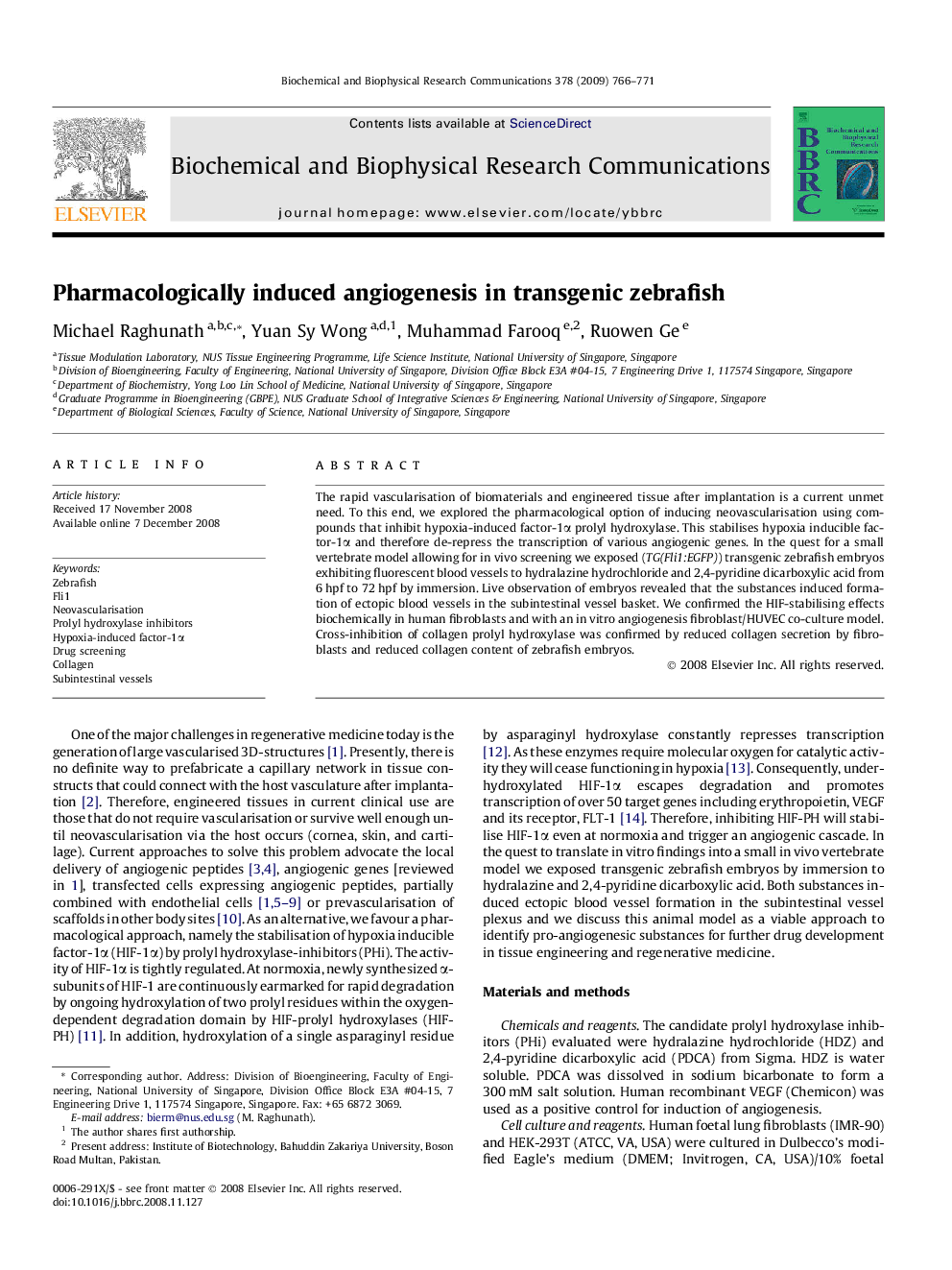| Article ID | Journal | Published Year | Pages | File Type |
|---|---|---|---|---|
| 1934977 | Biochemical and Biophysical Research Communications | 2009 | 6 Pages |
The rapid vascularisation of biomaterials and engineered tissue after implantation is a current unmet need. To this end, we explored the pharmacological option of inducing neovascularisation using compounds that inhibit hypoxia-induced factor-1α prolyl hydroxylase. This stabilises hypoxia inducible factor-1α and therefore de-repress the transcription of various angiogenic genes. In the quest for a small vertebrate model allowing for in vivo screening we exposed (TG(Fli1:EGFP)) transgenic zebrafish embryos exhibiting fluorescent blood vessels to hydralazine hydrochloride and 2,4-pyridine dicarboxylic acid from 6 hpf to 72 hpf by immersion. Live observation of embryos revealed that the substances induced formation of ectopic blood vessels in the subintestinal vessel basket. We confirmed the HIF-stabilising effects biochemically in human fibroblasts and with an in vitro angiogenesis fibroblast/HUVEC co-culture model. Cross-inhibition of collagen prolyl hydroxylase was confirmed by reduced collagen secretion by fibroblasts and reduced collagen content of zebrafish embryos.
